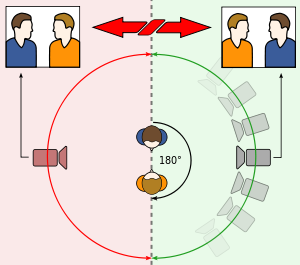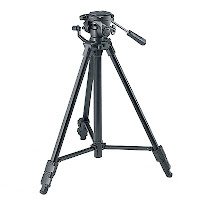This task should demonstrate match on action, shot/reverse shot and the 180-degree rule.
Friday 30 September 2011
Prelim Coursework Task
Continuity task involving filming and editing a character opening a door, crossing a room and sitting down in a chair opposite another character, with whom she/he then exchanges a couple of lines of dialogue.
This task should demonstrate match on action, shot/reverse shot and the 180-degree rule.
This task should demonstrate match on action, shot/reverse shot and the 180-degree rule.
Thursday 29 September 2011
Camera Angles
During this lesson we learnt about the different camera angles. We learnt about:
Big Close Up shot highlight emotion and the detail on the face.
A Mid shot is used to provide information on the body language and clothes of the character.
Wide shot is used to set a scene, make clear the physical geography of the space and sets up the atmosphere.
A Point Of View shot provides a perspective from a particular characters point of view; the director is manipulating whose eyes the audience experiences the story from.
A Close Up shot reveals a characters personality, it is useful for dramatic scenes or if a character is revealing moments of truth or crisis.
An Over The Shoulder shot helps to create a dynamic between the character and what they are seeing. It can also be used to suggest that someone is being followed or watched by an unseen person.
A High Angle shot can indicate low status or vulnerability.
A Long shot can be used to distance the audience from events or suggest loneliness or isolation.
After learning about the different camera angles we watched the opening scene of the film ‘Pleasantville’ about 5 times and analysed the different camera angles that were used. An establishing shot (Wide shot) was used at the start to present a day – school campus to highlight that the school could be anywhere such as California
Friday 23 September 2011
Camera – Lesson 2
Our second camera lesson was a test on what we had learnt the week before. We had to put up the camera in groups remembering what we had already learnt. We then learnt about the 180 degree rule.
Then we got a chance to film a scene in groups. We chose to film someone picking up a book from different angles. We started by filming from a wide shot to get everything in the shot, then we filmed a close up of her picking up the book, and then we filmed from the sides. Matt and Guy then showed them to us and told us about how we could cut clips from the different angles to make the scene better.

Then we got a chance to film a scene in groups. We chose to film someone picking up a book from different angles. We started by filming from a wide shot to get everything in the shot, then we filmed a close up of her picking up the book, and then we filmed from the sides. Matt and Guy then showed them to us and told us about how we could cut clips from the different angles to make the scene better.
The 180 degree rule means that two characters should always have the same left and right relationship to each other. When the camera crosses the line connecting the two subjects together it is called 'crossing the line.'

This picture shows the axis between two characters and the 180 degree arc where cameras will be positioned on the green side. When cutting from the green side to the red side, the characters switch places on the screen.
Camera – Lesson 1
 During my first lesson, our media teachers Matt and Guy taught us how to put the camera and tripod stand together like bubbling the tripod, how to put the camera on the tripod stand, how to put the battery in and lots more. Then we had a chance to put the camera together in groups. Then we learnt what some of the buttons on the camera do, such as white balance where you have to look at a white wall through the camera and click white balance to get a normal looking shot, exposure, zooming and focus where you zoom in on an object and check that it is in focus and not blurry. After that we looked on the screen and Matt and Guy told us what some of the images on the screen were. We had a battery and some numbers which meant how long the battery has left, and we learnt about time coding including number of frames per second, seconds, minutes and hours. We learnt about the exposure – that 50 was the normal amount of exposure that you needed.
During my first lesson, our media teachers Matt and Guy taught us how to put the camera and tripod stand together like bubbling the tripod, how to put the camera on the tripod stand, how to put the battery in and lots more. Then we had a chance to put the camera together in groups. Then we learnt what some of the buttons on the camera do, such as white balance where you have to look at a white wall through the camera and click white balance to get a normal looking shot, exposure, zooming and focus where you zoom in on an object and check that it is in focus and not blurry. After that we looked on the screen and Matt and Guy told us what some of the images on the screen were. We had a battery and some numbers which meant how long the battery has left, and we learnt about time coding including number of frames per second, seconds, minutes and hours. We learnt about the exposure – that 50 was the normal amount of exposure that you needed. Introduction
Hi, my name is Victoria Cooper, I am 17 and I go to Hurtwood House. I am studying Media Studies, Business Studies, Geography and Accountancy. I chose Media Studies because I wanted a ‘fun’ subject and it seemed really interesting, so far I am enjoying it. I enjoy filming and editing clips, but I don’t really like acting. I am hoping Media will help to build up my self confidence and by the end of the course I will be able to edit films to a higher standard and know how to use a professional camera. I am looking forward to the point that we start filming clips, but I am worried that I might have to act or that if I do the filming that I will miss a clip. My interests are cooking, hockey, animals, books and seeing friends. My favourite film is the ‘Inbetweeners Movie’.
Subscribe to:
Posts (Atom)








